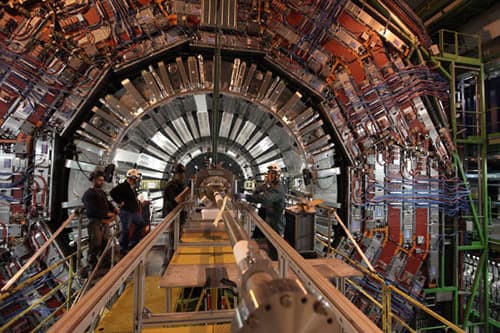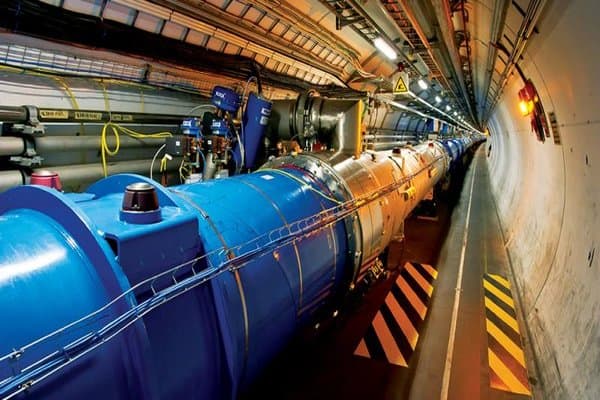Will CERN's Recent Findings Strengthen Supersymmetry?
The University of Bristol Particle Physics Group along with CERN officials are hopeful of getting signs of 'new physics' (physics beyond the standard model), based upon the accumulated results from the Large Hadron Collider, the world’s largest particle accelerator at CERN. The LHC was shut down for 2 years after the suspected finding of the Higgs-Boson. After several months of re-commissioning, it was operated at an energy of 13 TeV, double that of the first run and provided data taken between June to November, which may well strengthen the Supersymmetry Theory.

Work being done to upgrade CMS
Supersymmetry(SUSY), a theory of particle physics, is a proposed type of spacetime symmetry that relates two basic classes of elementary particles: bosons, which have an integer-valued spin, and fermions, which have a half-integer spin. Each particle from one group is associated with a particle from the other, known as its Superpartner, the spin of which differs by a half-integer. Scientists collided high energy protons inside the LHC, hoping to find these exotic particles.
Physicists from the University Of Bristol were analyzing data received from LHC’s Compact Muon Solenoid (CMS) experiment (after customization of the LHC) to find signs of Gluinos (supersymmetric partner of Gluons) which later decay into quarks and neutralinos (supersymmetric partners of Photons and Z Bosons). If neutralinos are indeed found, they could be a strong dark matter candidate and help to throw light on several poorly understood aspects of the universe.

Inside LHC
The CMS was able to produce its first results within a month, thanks to Bristol's superior computing technologies. However, no signs of Gluinos were found during this trial. The suspected reason of failure was attributed to the much higher than anticipated mass of Light Neutralino’s (mass exceeding 1600 GeV).
CERN is optimistic about their chances next year, when they would increase the CMS data sample by 10 times. Professor Joel Goldstein, leader of the Bristol CMS activities was very impressed by the sheer volume of useful data presented by the LHC in such a short time span. He was hopeful that the next run of the LHC could well produce evidence for SUSY and usher the age of 'new physics'.
Source: #-Link-Snipped-#

Work being done to upgrade CMS
Physicists from the University Of Bristol were analyzing data received from LHC’s Compact Muon Solenoid (CMS) experiment (after customization of the LHC) to find signs of Gluinos (supersymmetric partner of Gluons) which later decay into quarks and neutralinos (supersymmetric partners of Photons and Z Bosons). If neutralinos are indeed found, they could be a strong dark matter candidate and help to throw light on several poorly understood aspects of the universe.

Inside LHC
CERN is optimistic about their chances next year, when they would increase the CMS data sample by 10 times. Professor Joel Goldstein, leader of the Bristol CMS activities was very impressed by the sheer volume of useful data presented by the LHC in such a short time span. He was hopeful that the next run of the LHC could well produce evidence for SUSY and usher the age of 'new physics'.
Source: #-Link-Snipped-#
0
